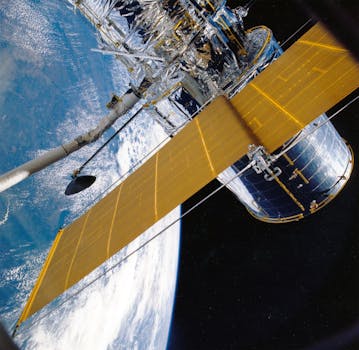GEO Satellites: Understanding the Technology and Applications of Geostationary Orbit Satellites

GEO Satellites: Understanding the Technology and Applications of Geostationary Orbit Satellites
GEO satellites, or geostationary orbit satellites, are a type of artificial satellite that orbits the Earth at an altitude of approximately 35,786 kilometers above the equator. The focus keyword GEO satellites is a term used to describe these satellites, which are used for a variety of applications including telecommunications, navigation, and weather forecasting. At the beginning of our content, we will explore the GEO satellites technology and its applications.
GEO satellites are unique in that they orbit the Earth at the same speed as the planet’s rotation, which allows them to remain stationary in the sky relative to a fixed point on the Earth’s surface. This makes them ideal for providing continuous coverage of a specific region, such as a country or continent. The technology behind GEO satellites is complex and involves a range of disciplines, including astronomy, physics, and engineering.
History of GEO Satellites
The concept of GEO satellites was first proposed by science fiction writer Arthur C. Clarke in 1945. However, it wasn’t until the 1960s that the first GEO satellite, Syncom 2, was launched. Since then, numerous GEO satellites have been launched, including Intelsat 1, which was the first commercial GEO satellite, and TDRS-1, which was the first satellite to use the geostationary orbit for telecommunications.
Today, there are hundreds of GEO satellites in orbit around the Earth, providing a range of services including television broadcasting, telecommunications, navigation, and weather forecasting. The applications of GEO satellites are diverse and continue to expand as technology advances.
Applications of GEO Satellites
GEO satellites have a range of applications, including telecommunications, navigation, and weather forecasting. In telecommunications, GEO satellites are used to provide internet connectivity, telephone services, and television broadcasting. They are also used for navigation, providing location information and timing signals for GPS and other navigation systems.
In addition to these applications, GEO satellites are also used for weather forecasting, providing images of the Earth’s atmosphere and oceans that are used to predict weather patterns. They are also used for Earth observation, providing data on the Earth’s climate, geography, and natural resources.
Challenges and Future Developments
Despite the many advantages of GEO satellites, there are also challenges associated with their use. One of the main challenges is the risk of collisions with other satellites or space debris, which can cause significant damage and disruption to services. There is also a risk of interference from other satellites or terrestrial systems, which can affect the quality of the signal.
Looking to the future, there are many developments that are expected to shape the use of GEO satellites. One of the main trends is the increasing use of high-throughput satellites, which provide faster and more efficient connectivity. There is also a growing interest in the use of small satellites, which are smaller and more affordable than traditional GEO satellites.
Another trend is the increasing use of satellite constellations, which involve multiple satellites working together to provide a range of services. These constellations are expected to play a key role in the development of 5G and other next-generation telecommunications systems.



